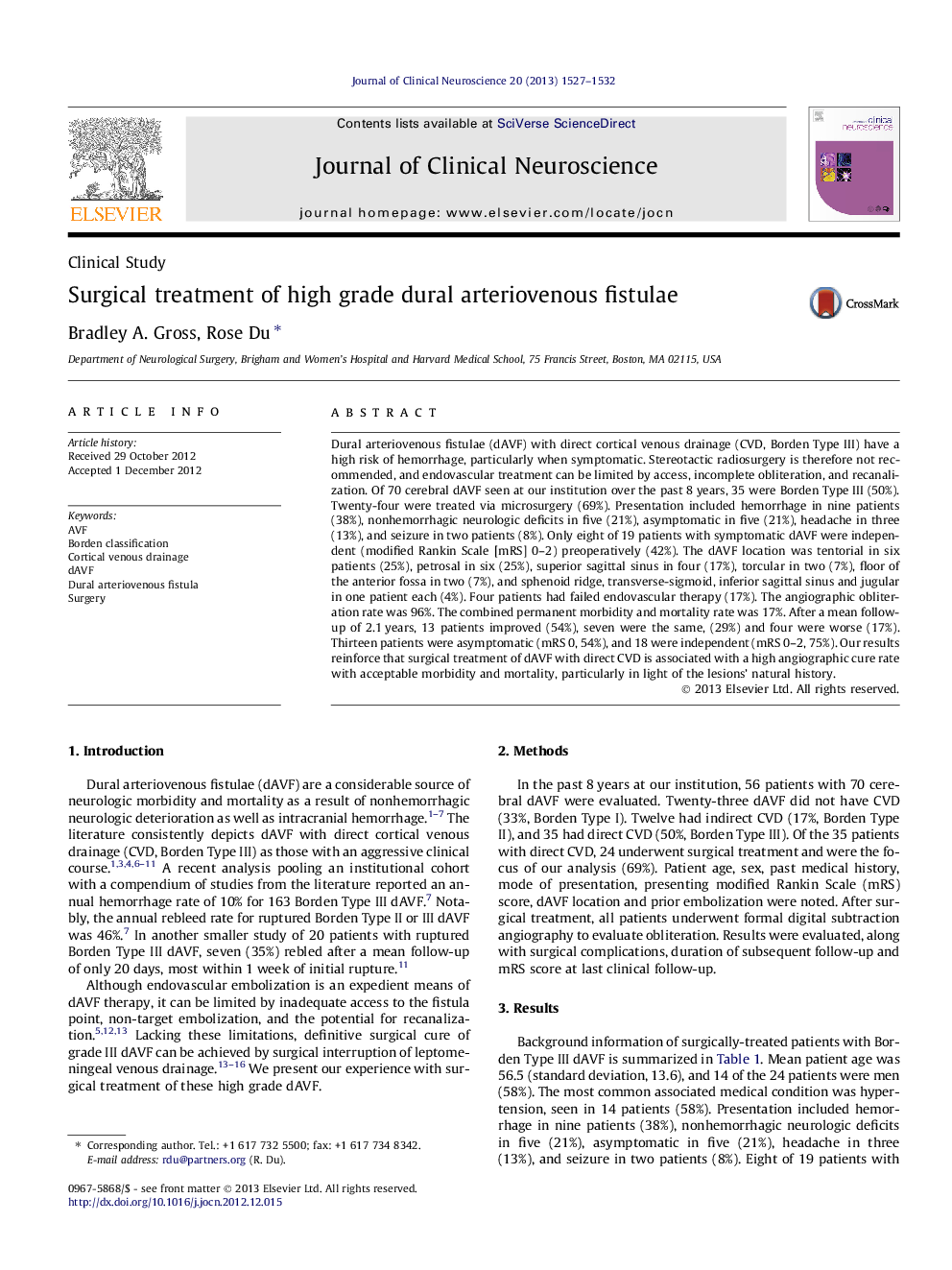| Article ID | Journal | Published Year | Pages | File Type |
|---|---|---|---|---|
| 3059715 | Journal of Clinical Neuroscience | 2013 | 6 Pages |
Dural arteriovenous fistulae (dAVF) with direct cortical venous drainage (CVD, Borden Type III) have a high risk of hemorrhage, particularly when symptomatic. Stereotactic radiosurgery is therefore not recommended, and endovascular treatment can be limited by access, incomplete obliteration, and recanalization. Of 70 cerebral dAVF seen at our institution over the past 8 years, 35 were Borden Type III (50%). Twenty-four were treated via microsurgery (69%). Presentation included hemorrhage in nine patients (38%), nonhemorrhagic neurologic deficits in five (21%), asymptomatic in five (21%), headache in three (13%), and seizure in two patients (8%). Only eight of 19 patients with symptomatic dAVF were independent (modified Rankin Scale [mRS] 0–2) preoperatively (42%). The dAVF location was tentorial in six patients (25%), petrosal in six (25%), superior sagittal sinus in four (17%), torcular in two (7%), floor of the anterior fossa in two (7%), and sphenoid ridge, transverse-sigmoid, inferior sagittal sinus and jugular in one patient each (4%). Four patients had failed endovascular therapy (17%). The angiographic obliteration rate was 96%. The combined permanent morbidity and mortality rate was 17%. After a mean follow-up of 2.1 years, 13 patients improved (54%), seven were the same, (29%) and four were worse (17%). Thirteen patients were asymptomatic (mRS 0, 54%), and 18 were independent (mRS 0–2, 75%). Our results reinforce that surgical treatment of dAVF with direct CVD is associated with a high angiographic cure rate with acceptable morbidity and mortality, particularly in light of the lesions’ natural history.
